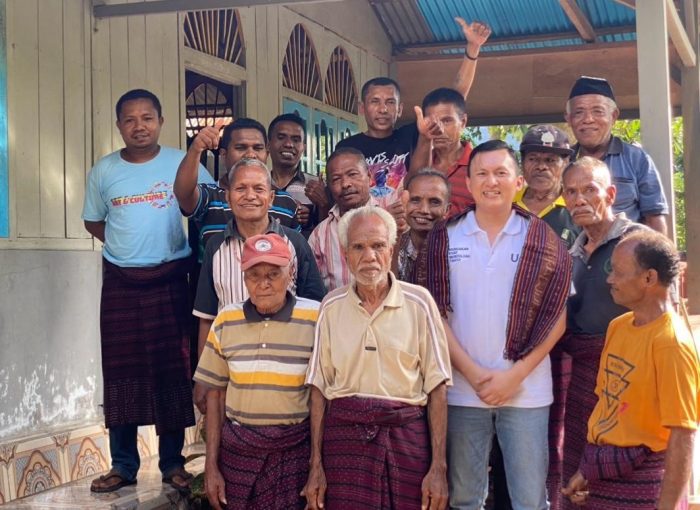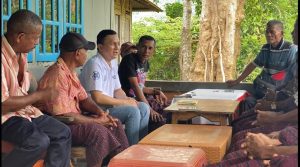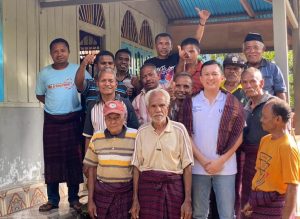
 The doctoral program of Inter-Religious Studies (S3 IRS), in collaboration with the National Research and Innovation Agency (BRIN), is embarking on a pivotal two-year (2024-2025) research project. This project, focusing on Digital Inclusion and its Dynamics among Indigenous Religious Communities in Indonesia, is led by Dr. Leonard Chrysostomos Epafras. The research team, including Hendrikus Paulus Kaunang, M.A., Ida Fitri Astuti, M.A., David Akbar Hasyemi Rafsanjani, S.S., and Yeni Yulianti, M.A. (BRIN), has been actively conducting field research since March 2024. These field visits to various indigenous religious communities in Lampung, Riau, Medan, Bangka Belitung, East Nusa Tenggara, and Maluku have provided invaluable insights into the dynamics of digital inclusion among them.
The doctoral program of Inter-Religious Studies (S3 IRS), in collaboration with the National Research and Innovation Agency (BRIN), is embarking on a pivotal two-year (2024-2025) research project. This project, focusing on Digital Inclusion and its Dynamics among Indigenous Religious Communities in Indonesia, is led by Dr. Leonard Chrysostomos Epafras. The research team, including Hendrikus Paulus Kaunang, M.A., Ida Fitri Astuti, M.A., David Akbar Hasyemi Rafsanjani, S.S., and Yeni Yulianti, M.A. (BRIN), has been actively conducting field research since March 2024. These field visits to various indigenous religious communities in Lampung, Riau, Medan, Bangka Belitung, East Nusa Tenggara, and Maluku have provided invaluable insights into the dynamics of digital inclusion among them.
Building on previous research in 2022 that focused on the digital activities of minority religious groups and communities, this study delves deeper into the dynamics of digital media utilization by indigenous religious communities in Indonesia. The team’s investigation reveals a complex and multifaceted digital landscape. It is a space where platforms offer a democratic social space for them to express their religion more freely but also serve as a medium for intolerant groups to spread hate speech and fake news. This intricate complexity underscores the pressing need for a comprehensive understanding of digital inclusion in these communities.

This platform (digital media) is used by every group, including intolerant groups, who use it as a medium for spreading hate speech and fake news aimed at vulnerable groups such as religious and cultural minority groups, women, marginalized groups, and others. The COVID-19 pandemic forced individuals and groups to increase their activities through digital media. This situation is challenging for religious communities, where religious activities are shifted from offline to online.
Religious discourse and narratives have long embraced technology in its individual and public manifestations, mainly through material objects and symbols. Religion manages the use of technology, including digital. However, in the development of digital technology, we need more knowledge and substance of the meaning of symbols. Many religious rituals and narratives, including those of minority religions and minority communities. This situation negates the developmental logic that assumes communities must follow and adapt to digital technology to become “modern” or “up to date.” This research looks at the digital inclusion of minority religious and belief communities under the Directorate of Beliefs and Indigenous Communities, Ministry of Education and Culture of Indonesia.
Through our in-depth study of the dynamics of digital inclusion among indigenous religious communities, we have unearthed a promising avenue to support the implementation of several sustainable development goals (SDGs), particularly points 10, 16 & 17. The use of media/digital technology is not just a tool but a potent catalyst for achieving these goals. A report by the United Nations Development Program (UNDP) and the International Telecommunication Union (ITU) revealed that more than two-thirds of the UN’s sustainable development targets can directly benefit from digital technology. This report underscores the transformative potential of digital media/technology, which can provide direct benefits (digital solutions) to 119 of the 169 SDG targets, or approximately 70 percent, spanning areas such as climate action, education, hunger, and poverty (UNDP, 2023).
This research aims to map indigenous religious communities’ digital activities, provide an overview of their challenges and opportunities in using digital media, and understand the relationship between spiritual/belief discourse and digital technology. Understanding the dynamics of digital inclusion among indigenous religious communities, the team believes that efforts to implement sustainable development goals (SDGs) could go in the right direction.
Author: Hendrikus Paulus Kaunang
